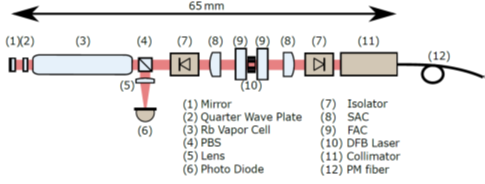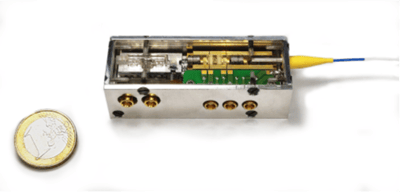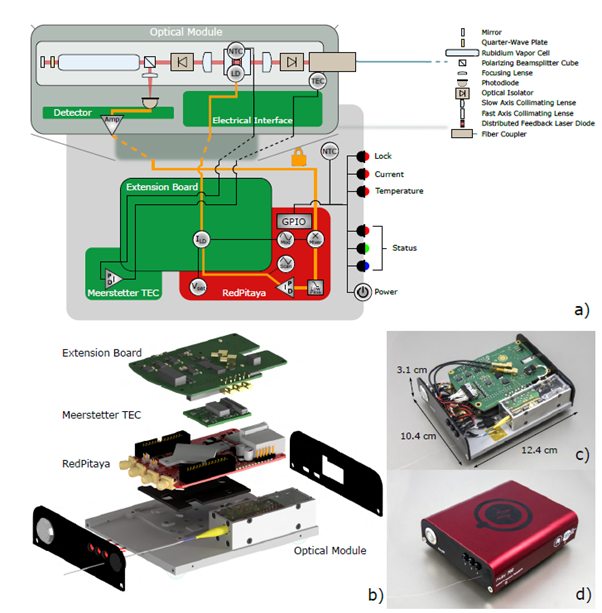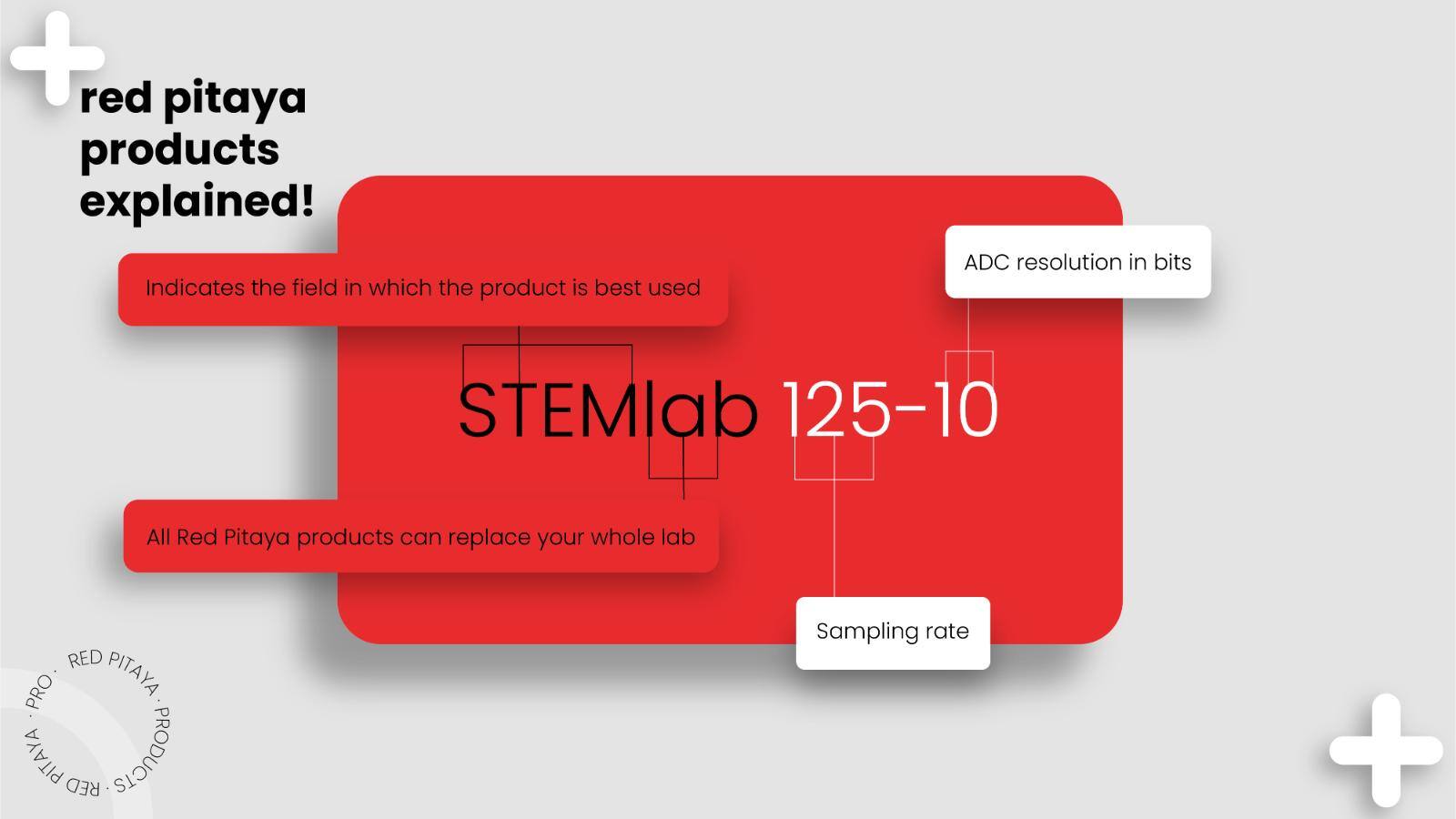A Compact Optical Frequency Reference for Nanosatellites
- Posted by
 Red Pitaya Team
, January 10, 2022
Red Pitaya Team
, January 10, 2022

It seems ironic that, despite the STEMLab´s compact size, this planet sometimes appears to become too small for Red Pitaya. After a first adventure in space, aboard the International Space Station (see previous blog post https://redpitaya.com/spacecraft-atmosphere-monitor-launched-by-nasa/), another STEMLab-14 unit might just be buckling up for launch, sometime in 2022.
In their article “A Prototype of a Compact Rubidium-Based Optical Frequency Reference for Operation on Nanosatellites”, Aaron Strangfeld and coauthors describe the design, assembly and testing of an optical frequency reference (OFR) in view of an in-orbit mission, as an integral part of a CubeSat. These are nanosatellites, weighing around 1 kg and measuring 10 x 10 x 10 cm3. Specific applications for OFRs can be found in the fields of timekeeping, navigation, geodesy and high-precision measurements in fundamental physics (such as gravitational wave detection). After demonstrating their performance in laboratory conditions, more development efforts and technical maturity are still required to take the next step towards field applications, particularly for space subsystems requiring extreme robustness and reliability.
There are actually several types of OFRs. The models with the highest performance levels are based on optical lattices or trapped ions (with instabilities of 10-18 at timescales > 103 s), or on atomic beams and Ramsey-Bordé interferometry (smaller dimensions and instabilities around 10-15 at timescales > 1 s). However, even the most compact versions of both types exceed the size, weight and power (SWaP) budget of CubeSats. This is where the third OFR-type, based on atomic vapors, seems to offer a solution. The presented model, named iQube (for integrated Quantum technology subsystem for CubeSats), utilizes spectroscopy of the D2-transition in rubidium (Rb).
Its optical design is achieved by linear arrangement of optical components (see image below), with a pair of lenses, collimating light on either side of a 1.5 mm long GaAS distributed feedback diode (DFB). The light, emitted from one side output (right) is coupled into a polarization-maintaining single-mode fiber. The light on the other side is used for Rb-spectroscopy, using a vapor cell in borosilicate glass with angled windows. A double-passed quarter wave plate between the vapor cell and mirror rotates the polarization axis, so the polarizing beam splitter (PBS) can deflect the reflected beam. A lens then focuses the probe light onto a fast photodiode with a 500 MHz bandwidth. Frequency modulation spectroscopy (FMS), realized by modulation of the laser’s injection current at a frequency of 6.6 MHz, generates an error signal for a feedback-loop.

The physical appearance of the iQube, with dimensions of 70 x 26 x 19.2 mm3 and a weight of 73 g, and its subsequent assembly into a CubeSat, can be seen in the following pictures:


On the latter, the familiar sight of the 4 Red Pitaya I/O-connectors immediately reveals its hideout. Further functional components for iQube operation, besides the OFR (upper right), are a Meerstetter TEC-1091 temperature controller (right) and a current driver (upper left).
The STEMLab-14 unit, with its fast ADCs and DACs (125 MS/s @ 14-bit resolution), FPGA and Linux system in a compact form factor, runs the open-source Linien software for laser frequency stabilization. This is done by multitasking the modulation signal generation, spectroscopy signal demodulation, digital filtering of the signal, and the PID-controller, generating the control signal with a servo bandwidth of about 700 kHz. Quite a to-do list, especially since it all needs to be done simultaneously.
Comprehensive laboratory tests have shown satisfactory results in terms of the Allan deviation of the relative frequency deviation, measured by beat-note measurements, using two additional frequency references. The results show an Allan deviation of 1.7 x 10-12 at 1 s averaging time and a minimum of 3.4 x 10-13 at 102 s. These results are in line with similar compact systems with a frequency reference, suited for use in laser systems for cold atom experiments or optical metrology applications.
So, job done? Not exactly. Before being hurled into space, the CubeSat still has some work to do, mainly getting the nanosat ready to operate in space conditions, involving a series of qualification tests to check compliance with vibrations, thermal vacuum, outgassing, radiation, etc. One might think that, for Red Pitaya, this phase could produce a “been there, done that” feeling, but the prospect of our work orbiting Earth is always something to look forward to.


.jpg?width=767&name=blog%20featured%20image%20(100).jpg)
.jpg?width=767&name=blog%20featured%20image%20(85).jpg)

